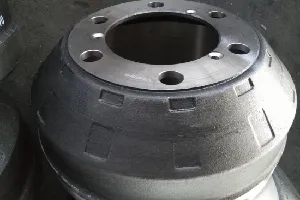
-
 Afrikaans
Afrikaans -
 Albanian
Albanian -
 Amharic
Amharic -
 Arabic
Arabic -
 Armenian
Armenian -
 Azerbaijani
Azerbaijani -
 Basque
Basque -
 Belarusian
Belarusian -
 Bengali
Bengali -
 Bosnian
Bosnian -
 Bulgarian
Bulgarian -
 Catalan
Catalan -
 Cebuano
Cebuano -
 Corsican
Corsican -
 Croatian
Croatian -
 Czech
Czech -
 Danish
Danish -
 Dutch
Dutch -
 English
English -
 Esperanto
Esperanto -
 Estonian
Estonian -
 Finnish
Finnish -
 French
French -
 Frisian
Frisian -
 Galician
Galician -
 Georgian
Georgian -
 German
German -
 Greek
Greek -
 Gujarati
Gujarati -
 Haitian Creole
Haitian Creole -
 hausa
hausa -
 hawaiian
hawaiian -
 Hebrew
Hebrew -
 Hindi
Hindi -
 Miao
Miao -
 Hungarian
Hungarian -
 Icelandic
Icelandic -
 igbo
igbo -
 Indonesian
Indonesian -
 irish
irish -
 Italian
Italian -
 Japanese
Japanese -
 Javanese
Javanese -
 Kannada
Kannada -
 kazakh
kazakh -
 Khmer
Khmer -
 Rwandese
Rwandese -
 Korean
Korean -
 Kurdish
Kurdish -
 Kyrgyz
Kyrgyz -
 Lao
Lao -
 Latin
Latin -
 Latvian
Latvian -
 Lithuanian
Lithuanian -
 Luxembourgish
Luxembourgish -
 Macedonian
Macedonian -
 Malgashi
Malgashi -
 Malay
Malay -
 Malayalam
Malayalam -
 Maltese
Maltese -
 Maori
Maori -
 Marathi
Marathi -
 Mongolian
Mongolian -
 Myanmar
Myanmar -
 Nepali
Nepali -
 Norwegian
Norwegian -
 Norwegian
Norwegian -
 Occitan
Occitan -
 Pashto
Pashto -
 Persian
Persian -
 Polish
Polish -
 Portuguese
Portuguese -
 Punjabi
Punjabi -
 Romanian
Romanian -
 Russian
Russian -
 Samoan
Samoan -
 Scottish Gaelic
Scottish Gaelic -
 Serbian
Serbian -
 Sesotho
Sesotho -
 Shona
Shona -
 Sindhi
Sindhi -
 Sinhala
Sinhala -
 Slovak
Slovak -
 Slovenian
Slovenian -
 Somali
Somali -
 Spanish
Spanish -
 Sundanese
Sundanese -
 Swahili
Swahili -
 Swedish
Swedish -
 Tagalog
Tagalog -
 Tajik
Tajik -
 Tamil
Tamil -
 Tatar
Tatar -
 Telugu
Telugu -
 Thai
Thai -
 Turkish
Turkish -
 Turkmen
Turkmen -
 Ukrainian
Ukrainian -
 Urdu
Urdu -
 Uighur
Uighur -
 Uzbek
Uzbek -
 Vietnamese
Vietnamese -
 Welsh
Welsh -
 Bantu
Bantu -
 Yiddish
Yiddish -
 Yoruba
Yoruba -
 Zulu
Zulu
Leading and Trailing Shoe Drum Brake System | Working Principle and Applications
The Functionality and Importance of Leading and Trailing Shoe Drum Brakes
Drum brakes have been a fundamental component in vehicle braking systems for over a century. Among the various designs of drum brakes, the leading and trailing shoe configuration is one of the most significant. Understanding how these components work not only enhances our grasp of vehicle mechanics but also highlights their critical role in ensuring road safety.
Basic Structure of Drum Brakes
A drum brake system consists of several essential parts the brake drum, brake shoes, return springs, wheel cylinder, and, in some designs, a self-adjusting mechanism. The brake drum is attached to the wheel, while the brake shoes are positioned inside the drum. When the brake pedal is pressed, hydraulic pressure is generated, causing the wheel cylinder to push the brake shoes against the inner surface of the drum, creating friction that slows down the wheel.
Leading and Trailing Shoes Explained
The configuration of brake shoes in a drum brake system is crucial to its performance. In a typical drum brake setup, one shoe is designated as the leading shoe and the other as the trailing shoe. The leading shoe is the one that makes contact with the drum first when the brakes are applied. As the drum rotates, the leading shoe is pushed against the drum's surface, providing a force that increases as the vehicle decelerates.
leading and trailing shoe drum brake

The trailing shoe, in contrast, makes contact with the drum after the leading shoe. Its primary function is to assist in the braking process by helping to stabilize and balance the braking action. The trailing shoe typically has a slightly different design and may not generate as much initial friction as the leading shoe.
Benefits of the Leading and Trailing Configuration
The leading and trailing shoe configuration offers several advantages over other braking mechanisms. One of the main benefits is the self-energizing effect. As the leading shoe presses against the drum, it causes the shoe to pivot and further press against the drum, increasing braking force without requiring excessive hydraulic pressure. This self-energization means that drum brakes can provide effective stopping power with less pedal force, enhancing driver comfort and control.
Moreover, this configuration contributes to reduced wear and tear on brake components. As the leading shoe does most of the work during braking, it can be designed with a thicker lining, thereby extending its lifespan compared to the trailing shoe. Regular maintenance and inspections can ensure that both shoes wear evenly, promoting efficiency and longevity.
Conclusion
In summary, leading and trailing shoe drum brakes serve a vital role in vehicle braking systems by providing effective deceleration and enhancing safety. Their design allows for efficient force application and minimizes wear, making them a reliable choice for many automotive applications. As we continue to innovate in vehicle technology, understanding these foundational components will remain essential for both automotive engineers and everyday drivers. With appropriate care and understanding, drivers can ensure their braking systems perform optimally, enhancing road safety for everyone.
-
What Are Drum BrakesNewsJul.07,2025
-
Understanding Brake Drum MaterialNewsJul.07,2025
-
Semi-Trailer Brake Drum: A Key Component for Extreme Loads and Long-Distance TransportNewsJul.07,2025
-
Drum Brake Pads for SaleNewsJul.07,2025
-
Brake Drums for SaleNewsJul.07,2025
-
Brake Drum ManufacturerNewsJul.07,2025
-
Aluminum Brake Drums: The Future of High-Performance CarsNewsJul.07,2025
